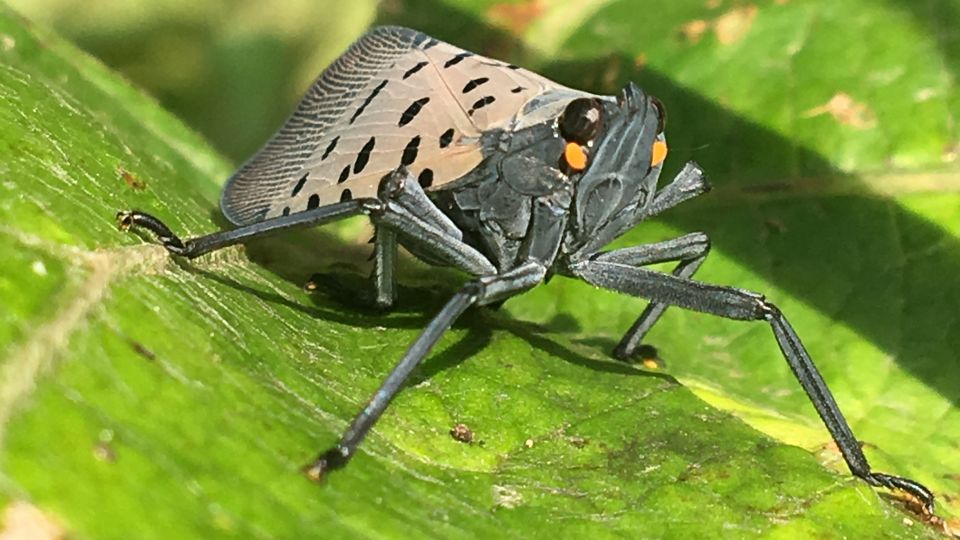
Spotted Lanternfly
About
The spotted lanternfly, Lycorma delicatula, is an inch-long black, red, and white-spotted pest. It attacks the woody tissue on grapes, apples, cherries, peaches, pines, and many other species of trees and shrubs. The invasive pest, native to China, has a voracious appetite. It’s been on the march around the U.S. since first being detected during fall 2014 in eastern Pennsylvania.
Biology
There are different life stages of the spotted lanternfly, according to entomologists. Females lay eggs in clusters of 30 to 50 eggs beginning late August or September, until freezing temperatures. These egg masses have a gray waxy mud-like coating and hatched eggs appear like brownish seed-shaped deposits in four to seven columns. They are about 1 inch to 1.5 inches long and ½ to 3/4 inch wide.
Egg masses are often seen on flat surfaces such as vehicles, crates, pallets, containers, and tree trunks. They are visible through the winter. These masses should be scraped off the surfaces and destroyed. Eggs are believed to begin hatching in mid-to-late May.
The insect only produces one generation.
Preferred Host
Tree of heaven (Ailanthus altissima), an invasive tree species from China.
What to Watch For
Growers are encouraged to scout for egg masses in vineyards, apple, and peach orchards. Crop protection management recommendations for grapes and tree fruit are available.
Economic Impacts
While the current spread is mostly limited to the Mid-Atlantic, the habit for this pest in the U.S. is wide-ranging, according to USDA data. The Midwest, California, and the upper Pacific Northwest are potential future hot spots.

| Kingdom: | Animalia |
| Phylum: | Arthropoda |
| Class: | Insecta |
| Order: | Hemiptera |
| Infraorder: | Fulgoromorpha |
| Superfamily: | Fulgoroidea |
| Family: | Fulgoridae |
| Subfamily: | Aphaeninae |
| Genus: | Lycorma |
| Species: | L. delicatula |
| Binomial name | |
|---|---|
| Lycorma delicatula (White, 1845) | |
| Synonyms | |
| |



